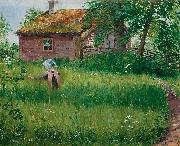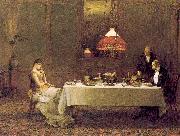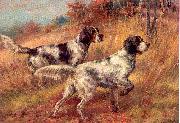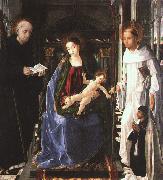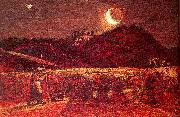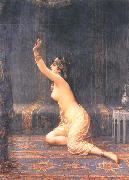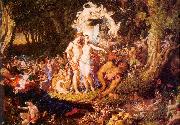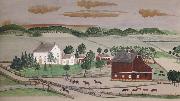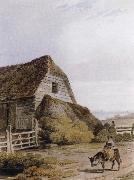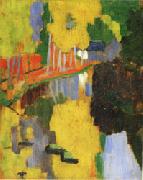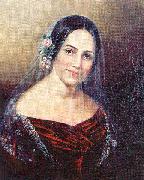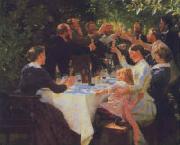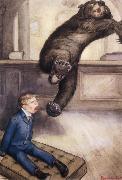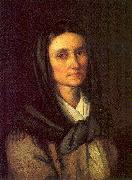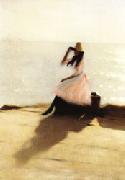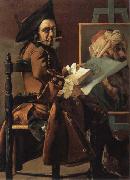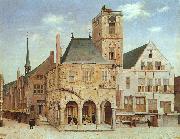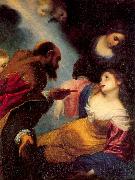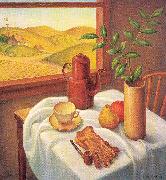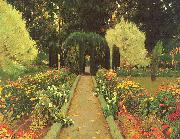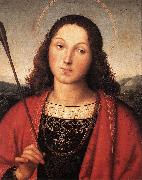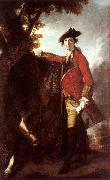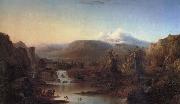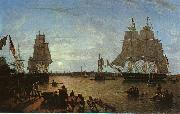|
|
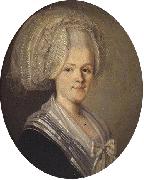 |
Nils Schillmark
|
|
Nils Schillmark (1745-1804)Aliases: Nils Schillmarch; Nils Schillmarck; Nils SkiellmarkProfessions: Portrait painter; Landscape painter; Painter.
(b Skellefteå, northern Sweden, 1745; d 1804). Finnish painter of Swedish birth. The son of a crofter, he was apprenticed in Stockholm to Pehr Fjellström, an artist and military officer. It is possible that Schillmark also studied at the Swedish Royal Academy of Art. He accompanied Fjellström on journeys to Finland and eventually moved there in 1773, first staying in Viaborg, the fortress situated off the shore near Helsinki, and later moving to the mainland and settling in Helsinki. In 1777 he began to receive commissions for portraits, and from then on he spent most of his life as a travelling portrait painter. His sitters came from both the bourgeoisie and the landed gentry, but they were widely spread across southern and western Finland. Occasionally Schillmark also received other kinds of commissions, for example for an altarpiece for the old stone church in Hattula (in situ). From 1787 Schillmark lived permanently in the town of Loviisa, but he continued to tour the estates of the neighbouring countryside. His only landscape paintings to have been preserved are from this year and show the town of Heinola and its new residence for the governor of the Uusimaa and Häme districts. A few years later Schillmark produced a number of still-life paintings for this building. It is possible that he spent some time in Stockholm during this period. |
|
|
|
|
|
|
|
|
|
|
|
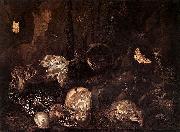 |
Otto Marseus van Schrieck
|
|
(ca. 1619, Nijmegen - buried June 22, 1678, Amsterdam) was a painter in the Dutch Golden Age.
Marseus van Schrieck spent the years 1648-1657 in Rome and Florence with the painters Matthias Withoos and Willem van Aelst, after which he settled in Amsterdam. He is best known for his paintings of forest flora and fauna. In Arnold Houbraken's biography of him, he mentions that he joined the Bentvueghels in Rome and was called the snuffelaer, or "sniffer", because he was always sniffing strange lizards and snakes. He quotes his wife, who apparently survived him by two husbands and was still alive when he wrote the book. He wrote that she said that Otto kept snakes and lizards in a shed at the back of his house, and also on a piece of land outside the city that was walled in for this purpose.
|
|
 |
Otto Scholderer
|
|
(25 January 1834 - 22 January 1902) was a German painter.
He was born in Frankfurt am Main. On completing his schooling, Scholderer went to the Städel academy of arts in 1849, where he remained until 1851. Among his teachers were the art historian Johann David Passavant and the painter Jakob Becker. Subsequently, Scholderer established himself in Städel as a freelance painter. During this period his friendship with Victor Meller began; Scholderer became his brother-in-law in 1868.
Through Meller, Scholderer became acquainted with the works of Gustave Courbet. Scholderer made several short study trips to Paris between 1857 and 1858, where he became friends with Henri Fantin-Latour and Édouard Manet, whose influence can be seen in his subsequent work. Fantin-Latour depicted Scholderer in his picture Studio aux Batignolles . Starting from 1858, Scholderer worked and lived predominantly in Kronberg in Taunus, where his colleagues included Anton Burger, Peter Burnitz and Louis Eysen; he was close to the Kronberger painter colony.
In 1866, Scholderer established himself in Desseldorf and made friends with Hans Thoma. With Thoma, Scholderer went in 1868 to Paris and returned to Germany only shortly before the outbreak of the French-German War. First Scholderer established himself in Munich, renewing his friendship with Wilhelm Leibl and becoming one of the artists of the Leibl-Kreis (Leibl circle). At the beginning of 1871 he went to London and worked there till the autumn of 1899. After 1899, Scholderer returned to his hometown of Frankfurt, where he died at the age of almost 68 years on 22 January 1902.
Otto Scholderer's art, initially dominated by landscapes, later consisted primarily of portraits and still lifes. The important connection between the romantic period and the Impressionists is evident in his work.
|
|
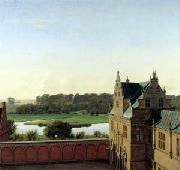 |
P.C. Skovgaard
|
|
(known as P.C. Skovgaard), (4 April 1817 - 13 April 1875), Danish national romantic landscape painter, was born near Ringsted to farmer Tham Masmann Skovgaard and his wife Cathrine Elisabeth. He is one of the main figures associated with the Golden Age of Danish Painting. He is especially known for his large scale portrayals of the Danish landscape.
The family had to leave the farm when he was six years old. They moved to Vejby in north Sjælland where his father earned his living as a grocer. Already as a young child he impressed his family with his artistic abilities. His mother, who had studied art under flower painter Claudius Ditlev Fritsch, gave him instructions in drawing until he was confirmed and could be sent to Copenhagen for training at the Royal Danish Academy of Art (Det Kongelige Danske Kunstakademi).
|
|
|
|
|
|
|
|
|
|
|
|
|
|
|
|
|
|
|
|
|
|
 |
Peck Sheldon
|
|
American portrait painter and artist
b.1797 d.1868 |
|
|
|
 |
Peder Severin Kroyer
|
|
(23 July 1851 - 21 November 1909), known as P.S. Krøyer, was a Norwegian-Danish painter. He is one of the best known and beloved, and undeniably the most colorful of the Skagen Painters, a community of Danish and Nordic artists who lived, gathered or worked in Skagen, Denmark, especially during the final decades of the 19th century. Krøyer was the unofficial leader of the group.
|
|
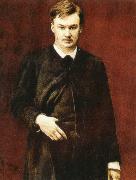 |
percy bysshe shelley
|
|
Born: 4 August 1792
Birthplace: Near Sussex, England
Died: 8 July 1822 (drowning)
Best Known As: 19th century romantic poet
|
|
 |
Peter Purves Smith
|
|
Peter Purves Smith (26 March 1912 - 23 July 1949), born Charles Roderick Purves Smith, was an Australian painter. Born in Melbourne, Purves Smith studied at the Grosvenor School of Modern Art in London and under progressive art teacher George Bell in Melbourne. |
|
|
|
|
|
 |
Peter Snayers
|
|
(1592 - 1666 or 1667) was a Flemish Baroque painter known for representations of historical battle scenes.Born in Antwerp, he studied under Sebastiaen Vrancx before joining Antwerp's Guild of St. Luke in 1612. By 1628, Snayers was a citizen in Brussels. |
|
|
|
|
|
|
|
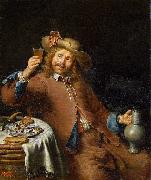 |
Pieter Cornelisz. van Slingelandt
|
|
(20 October 1640 - 7 November 1691) was a Dutch Golden Age painter.
According to Houbraken, his teacher was Gerard Dou, who he imitated so well that many of his works were later misattributed to him. According to Houbraken he was rather introverted and very methodical and conscientious, spending months on his works and striving for perfection. Houbraken especially liked a piece where a maid holds a mouse by the tail as a cat jumps for it.
Houbraken wrote that while Slingelandt was working on a family portrait for the gentleman Francois Meerman (1630-1672), |
|
|
|
 |
Pieter Jansz. Saenredam
|
|
(June 9 1597 - buried May 31 1665) was a painter of the Dutch Golden Age, known for his distinctive paintings of whitewashed church interiors.
Saenredam was born in Assendelft, the son of the Northern Mannerist printmaker and draughtsman Jan Pietersz Saenredam (1565-1607), a follower of Goltzius whose sensuous naked goddesses are in great contrast with the work of his son. In 1612 he moved to Haarlem, where he became a pupil of Frans de Grebber and lived for the rest of his life. In 1614 he became a member of the Haarlem Guild of St. Luke. He died in Haarlem.
A contemporary of the painter-architects Jacob van Campen, Salomon de Bray, and Pieter Post, he is noted for his surprisingly modern paintings of church interiors, the great bulk of his production. Saenredam achieved this modern look by using very even light, subtlely modulated, and by removing detailed depiction of textures, in meticulously measured and drawn sketches. He would make these sketches in pencil, pen, and chalk, then and add in watercolor to help give the sketch texture and color. The sketches are detailed, conveying the interior atmosphere through the clever use of light and graduated shadows. Saenredam often deliberately omitted people and church furniture from work, thus focusing more attention on buildings and their architectural forms. Only after having made precise measurements, and precise sketches and drawings of the churches, he would take them to his studio where he started to create his paintings, often after a delay of many years. His emphasis on even light and geometry is brought out by comparing his works with those of the rather younger Emanuel de Witte, who included people, contrasts of light and such clutter of church furniture as remained in Calvinist churches, all usually ignored by Saenredam. Unlike de Witte's, Saenredam's views are usually roughly aligned with a main axis of the church.
|
|
|
|
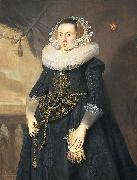 |
Pieter Soutman
|
|
(1593-1601 - 16 August 1657) was a Dutch Golden Age painter and printmaker from Haarlem.
|
|
|
|
|
|
|
|
|
|
|
|
 |
Raden Saleh
|
|
(1807 or 1811 - April 23, 1880) is one of the best known painters from Indonesia and a pioneer of modern Indonesian art.
He was considered to be the first modern artist from the Dutch East Indies (now Indonesia), and his paintings corresponded with nineteenth-century romanticism which was popular in Europe at the time. He also expressed his cultural roots and inventiveness in his work.
Raden Saleh, was born into a noble Javanese family. He was grandson of Sayyid Abdullah Bustaman from his mother's side. His father was Sayyid Husen bin Alwi bin Awal bin Yahya, an indonesian of arab descent.
|
|
|
|
|
|
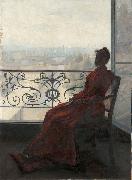 |
Rene Schutzenberger
|
|
Rene Schutzenberger (Mulhouse July 29, 1860, Paris December 31, 1916), also known as Paul Rene Schutzenberger, was a French painter.
Born in an Alsatian family of famous brewers, his father Paul Schutzenberger (1829-1897) was a French chemist. The painter Louis-Frederic Schutzenberger (1825-1903) was his cousin.
He studied at the Academie Julian under Jean-Paul Laurens.
He started to exhibit at the Salon des artistes français since 1891, at the Salon des Independants since 1902 and at the Societe Nationale des Beaux-Arts since 1907. He got an honourable mention at the Salon of 1897 and at the Universal Exhibition of 1900.
He practices genre painting, portraits, nudes and landscapes. He treats subjects of the daily life and intimists subjects. His style is close to the Post-Impressionism movement. His drawings are influenced by the Nabis.
|
|
|
|
 |
RICCI, Sebastiano
|
|
Italian painter, Venetian school (b. 1659, Belluno, d. 1734,
Venezia). |
|
|
|
|
|
|
|
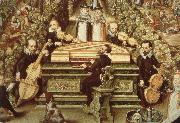 |
robert schumann
|
|
Date of birth: June 8, 1810 at Zwickau, Germany
Died: Jul 29, 1856 in Endenich, Germany Death: July 29, 1856 at Endenich, Germany |
|








